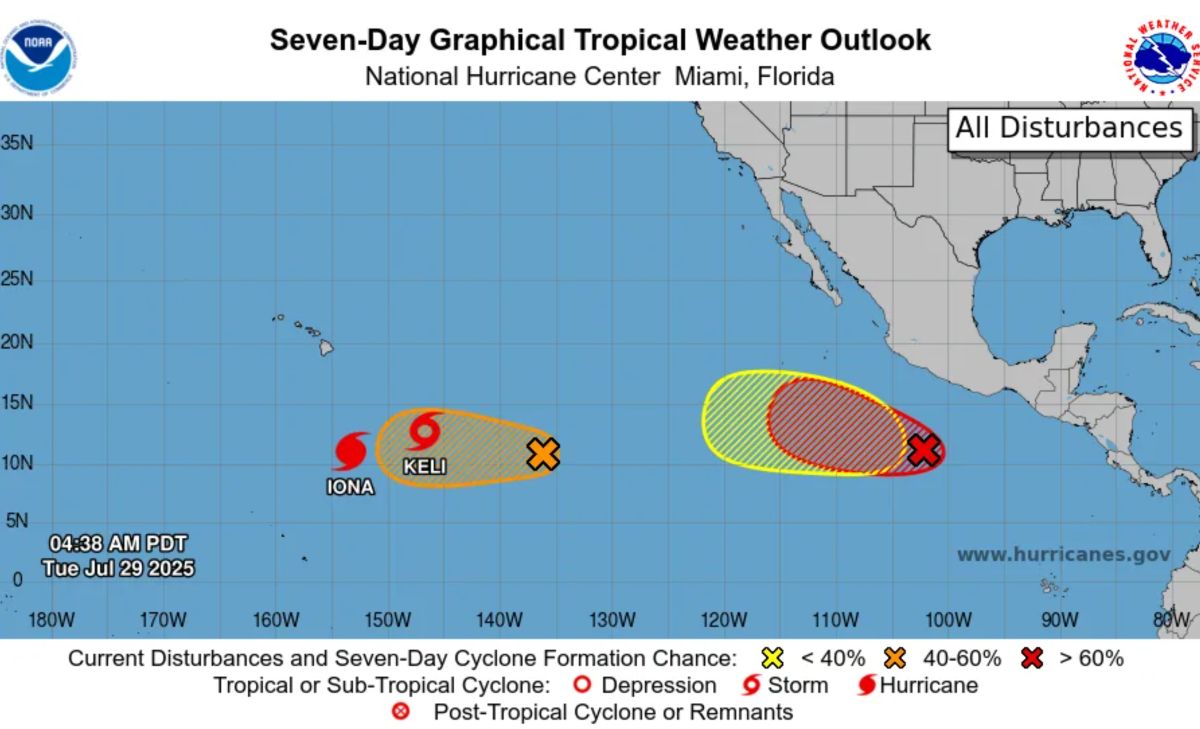On July 29, the US National Hurricane Center (NHC) is monitoring up to five tropical waves in the Atlantic and five systems under development in the Pacific, including a storm Iona that is approaching Category 4, with gusts of up to 200 km/h, not excluding the strengthening into a super typhoon.
The tropical environment will become significantly more favorable for Atlantic hurricane activity in the coming weeks, said Colorado State University forecaster Phil Klotzbach. The period from mid-August to mid-October is usually the time when the most super typhoons appear in the year.
5 tropical waves accelerating in the Atlantic
The latest storm news from the NHC at 2:00 p.m. on July 29 (US time) said that there are up to 5 tropical waves accelerating in the Atlantic.
Tropical Storm No. 1: In the eastern Atlantic (terrainline 22W), moving west at a speed of 17-27 km/h.
Wave No. 2: In the mid- Atlantic ( corridor 40W), the speed is slower at about 10 km/h.
Waves 3-5: Both located in the Caribbean Sea from longitude 68W to 87W, carrying showers and thunderstorms, are likely to form a tropical depression in the coming days.
So far, three named storms have been named for the 2025 Atlantic hurricane season:
Andrea (24.6): 4 days earlier than average
Barry (29.6): 18 days earlier
Chantal (5.7): Nearly a month earlier
The next storm, named Dexter, is expected to appear before August 15, earlier than the annual average.
Pacific Front: Iona and Keli explode together
On the Pacific side, the NHC is monitoring five dangerous weather systems.

January has become a Category 3 storm, with sustained winds of 205 km/h, just a short distance from Category 4, not excluding the strengthening into a super typhoon. The storm is about 1,180 km south of Hawaii.
Typhoon Keli is a tropical storm with winds of 65 km/h, showing no signs of significant strengthening.
EP98 and EP99 are both low pressure areas with the risk of becoming storms in the next 48 hours.
A new low pressure area is expected to form later this week, south of Mexico.
US officials stressed that people in states along the Atlantic and Pacific need to start preparing early in August. This year, the state of Florida (USA) will permanently exempt taxes on storm prevention and control items starting from August 1.
If the typhoon forecasts come true, August and September will be a real typhoon in both oceans.
In the East Sea, according to the Vietnam National Center for Hydro-Meteorological Forecasting, from now until the end of the year, the East Sea may have 8-11 storms, of which 3-5 will directly affect the mainland of Vietnam.
From August to October is the peak of storms and floods, with about 6-8 storms and tropical depressions expected to operate in the East Sea, of which 2-3 can directly affect the mainland of Vietnam. In November and December, there may be 2-3 more storms and tropical depressions, of which 1-2 will make landfall.











